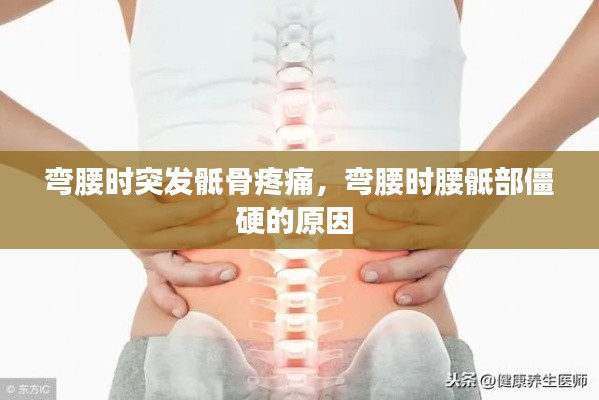<!DOCTYPE html>
<html lang="en">
<head>
<meta charset="UTF-8">
<meta name="viewport" content="width=device-width, initial-scale=1.0">
<title>Understanding Sudden Sacral Pain When Bending Over</title>
</head>
<body>
<h1>Understanding Sudden Sacral Pain When Bending Over</h1>
<h2>Introduction to Sacral Pain</h2>
<p>Sacral pain refers to discomfort or sharp, shooting sensations originating from the sacrum, the triangular bone at the base of the spine where it connects to the pelvis. This area is responsible for supporting the weight of the upper body and playing a crucial role in movement and stability. While sacral pain can occur due to various reasons, one common scenario is experiencing sudden pain when bending over.</p>
<h2>Common Causes of Sudden Sacral Pain</h2>
<p>Sudden sacral pain during bending can be attributed to several factors:</p>
<ul>
<li><p><strong>Strain or Sprain:</strong> Overexertion or an awkward movement can strain the ligaments or muscles around the sacrum, leading to immediate pain.</p></li>
<li><p><strong>Fibromyalgia:</strong> This chronic condition involves widespread pain and tenderness, including the sacral area, which can worsen with certain movements.</p></li>
<li><p><strong>Sciatica:</strong> While sciatica is typically associated with leg pain, it can also cause discomfort in the sacral region due to compression of the sciatic nerve roots.</p></li>
<li><p><strong>Spinal Stenosis:</strong> Narrowing of the spinal canal can compress the spinal cord or nerve roots, leading to pain when bending or twisting.</p></li>
<li><p><strong>Fracture or Dislocation:</strong> A sudden injury, such as a fall or a sports-related trauma, can cause a fracture or dislocation of the sacral bones, resulting in severe pain.</p></li>
</ul>
<h2>Symptoms and Signs</h2>
<p>When experiencing sudden sacral pain, individuals may notice the following symptoms:</p>
<ul>
<li><p><strong>Sharp, Shooting Pain:</strong> The pain can be sudden and intense, often described as a sharp, shooting sensation.</p></li>
<li><p><strong>Swelling:</strong> There may be localized swelling around the sacral area.</p></li>
<li><p><strong>Limited Mobility:</strong> Pain can restrict movement, making it difficult to bend or twist.</p></li>
<li><p><strong>Weakness or Numbness:</strong> In some cases, there may be weakness or numbness in the legs or buttocks.</p></li>
</ul>
<h2>Diagnosis</h2>
<p>Diagnosing sudden sacral pain typically involves a combination of medical history, physical examination, and diagnostic tests:</p>
<ul>
<li><p><strong>Medical History:</strong> The doctor will ask about the symptoms, including when the pain began and what activities may have triggered it.</p></li>
<li><p><strong>Physical Examination:</strong> The doctor will examine the sacral area for tenderness, swelling, and limited range of motion.</p></li>
<li><p><strong>Imaging Tests:</strong> X-rays, MRI, CT scans, or bone scans may be ordered to visualize the bones and soft tissues and identify any structural abnormalities.</p></li>
</ul>
<h2>Treatment Options</h2>
<p>The treatment for sudden sacral pain depends on the underlying cause. Common treatment approaches include:</p>
<ul>
<li><p><strong>Rest and Ice:</strong> Resting the affected area and applying ice can help reduce inflammation and pain.</p></li>
<li><p><strong>Physical Therapy:</strong> A physical therapist can provide exercises to strengthen the muscles around the sacrum and improve flexibility.</p></li>
<li><p><strong>Medications:</strong> Nonsteroidal anti-inflammatory drugs (NSAIDs) or pain relievers can help manage pain and inflammation.</p></li>
<li><p><strong>Surgery:</strong> In severe cases, such as a fracture or dislocation, surgery may be necessary to repair the damage.</p></li>
</ul>
<h2>Prevention and Lifestyle Changes</h2>
<p>Preventing sudden sacral pain involves maintaining good posture, engaging in regular exercise, and being mindful of转载请注明来自武汉雷电雨防雷工程有限公司,本文标题:《弯腰时突发骶骨疼痛,弯腰时腰骶部僵硬的原因 》
百度分享代码,如果开启HTTPS请参考李洋个人博客











 鄂ICP备19026574号-1
鄂ICP备19026574号-1
还没有评论,来说两句吧...